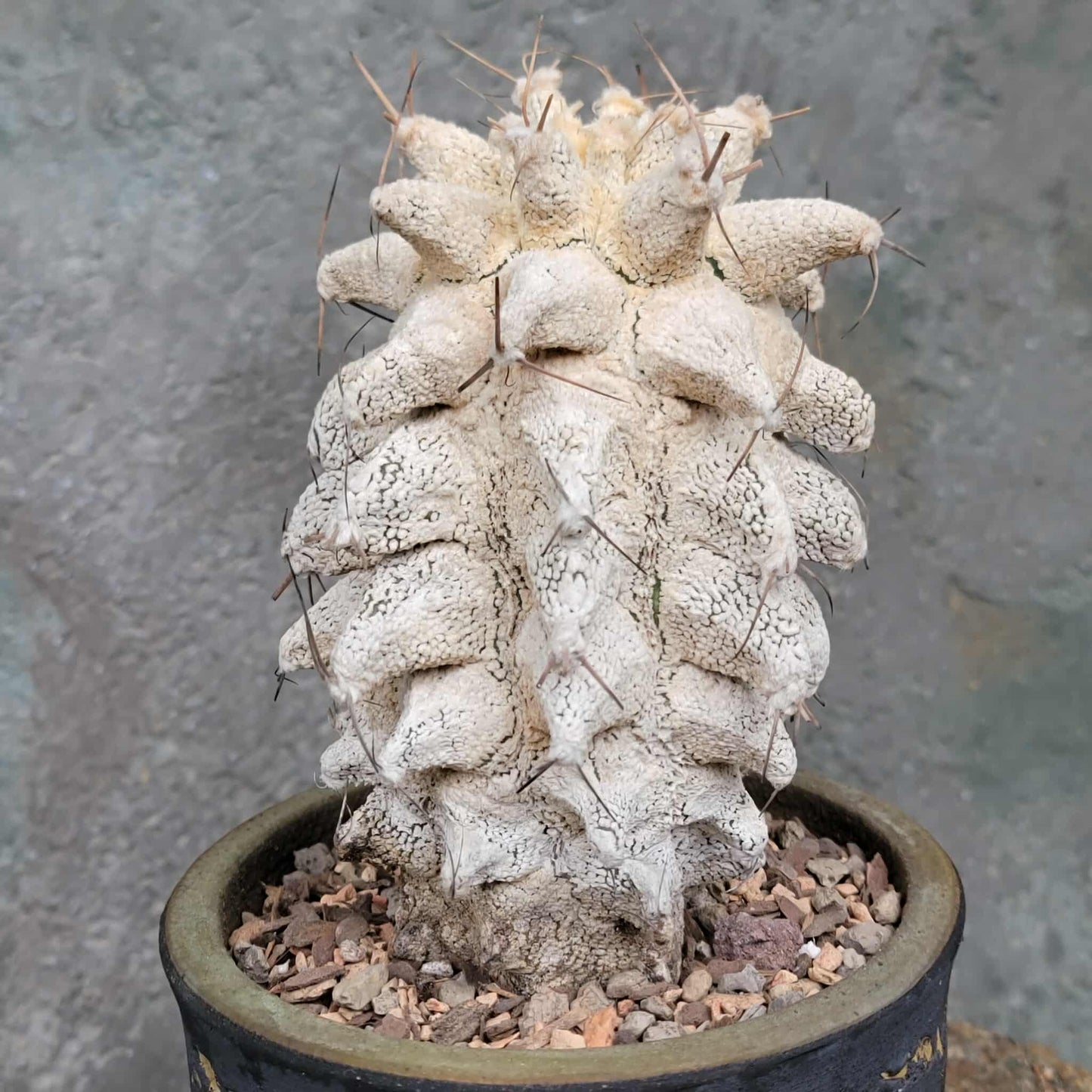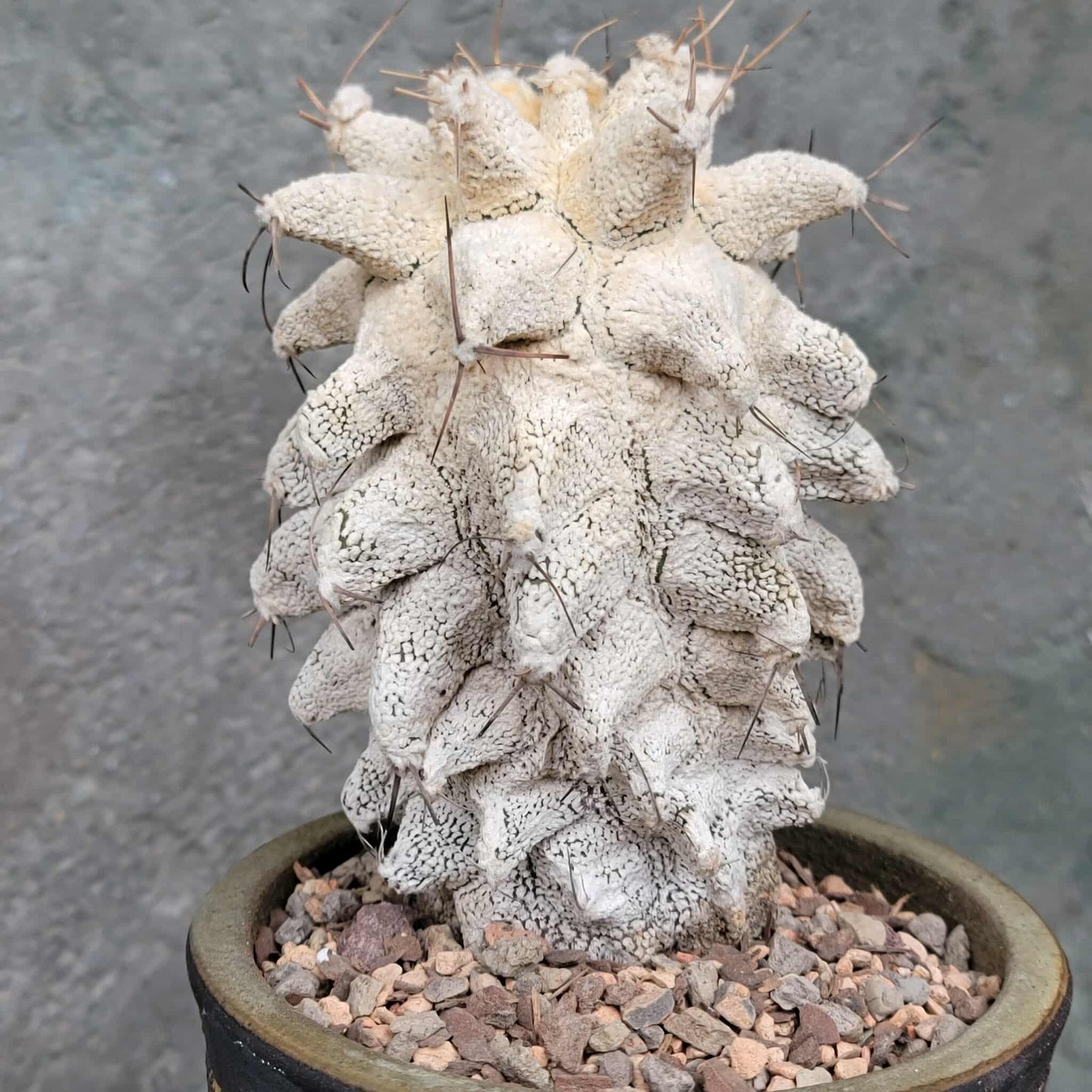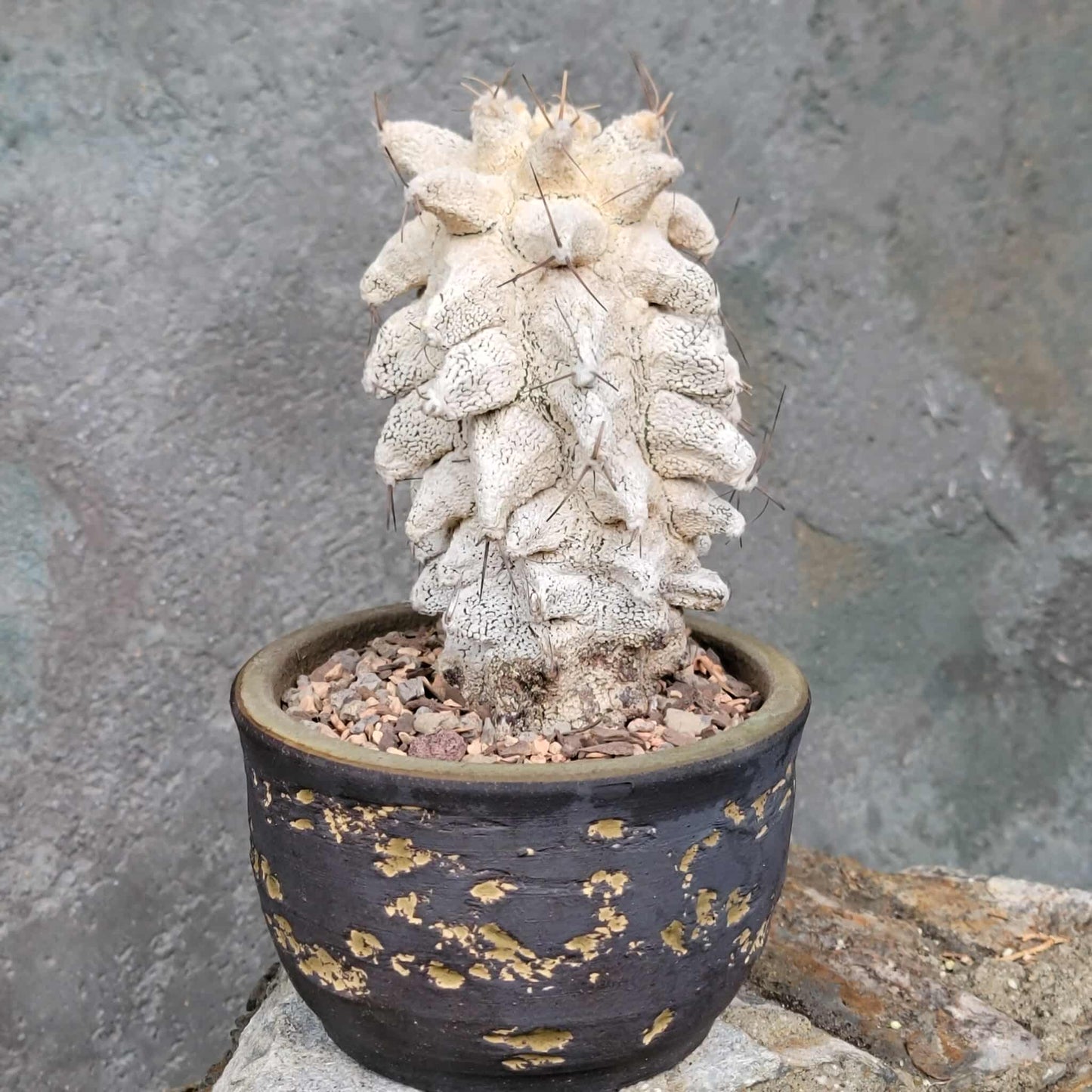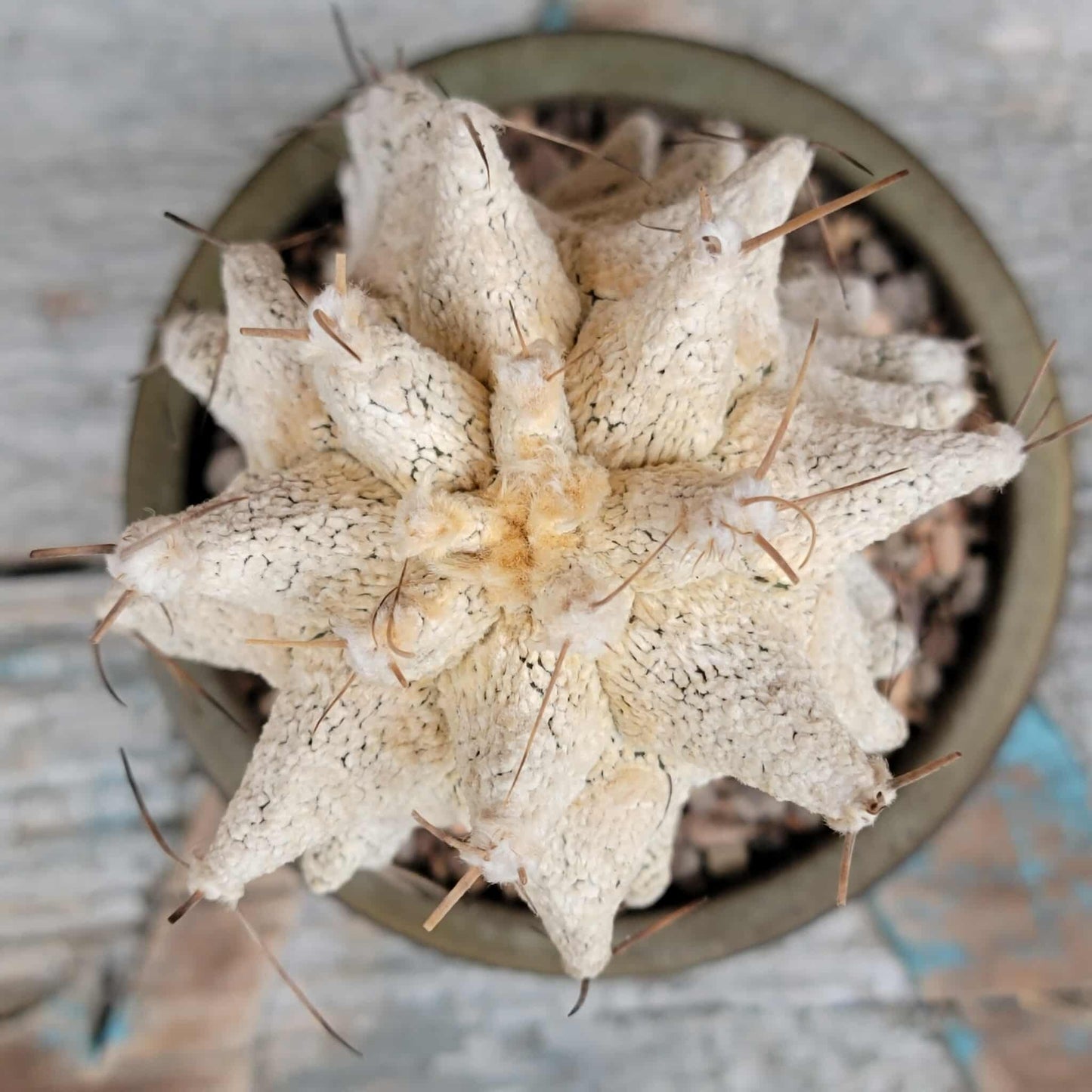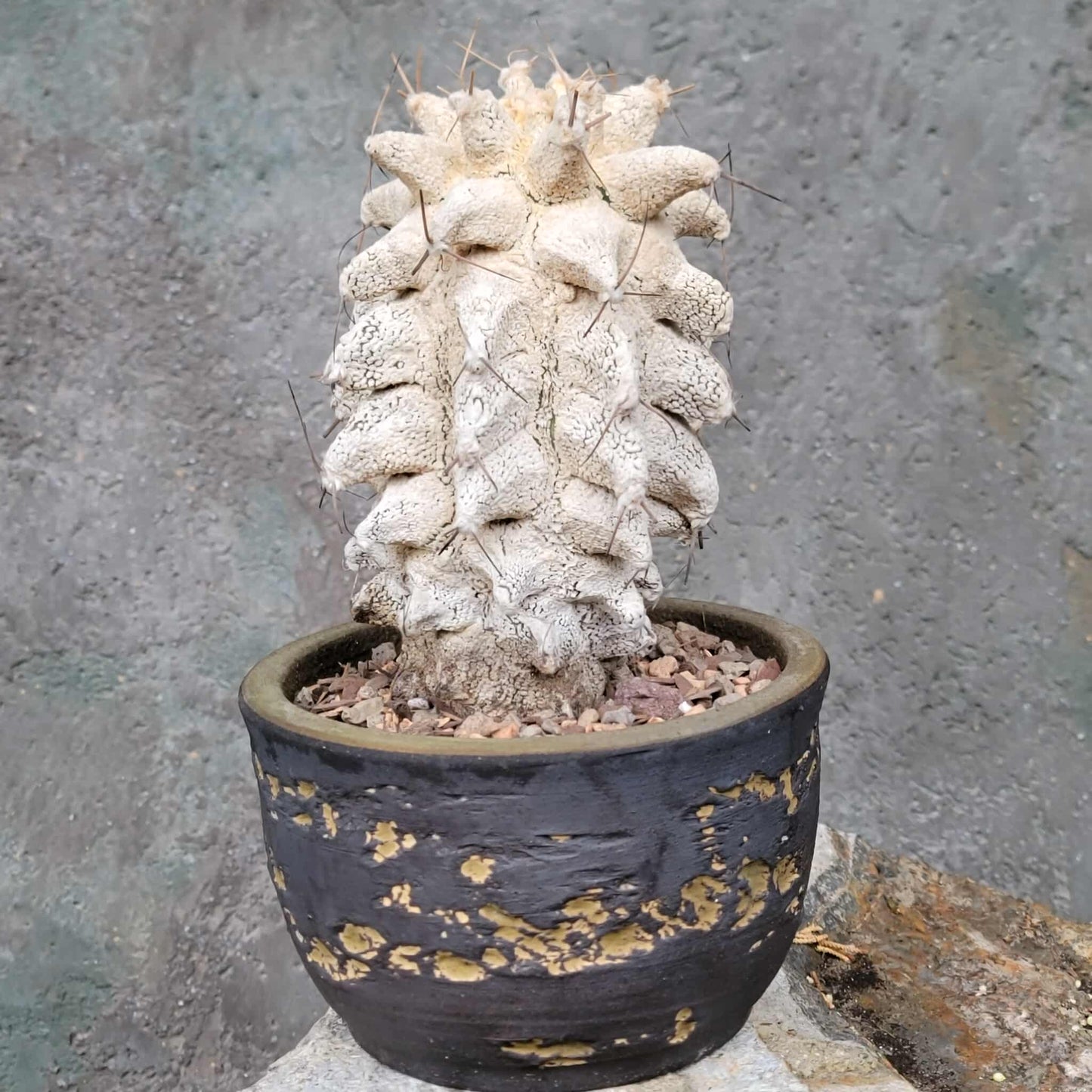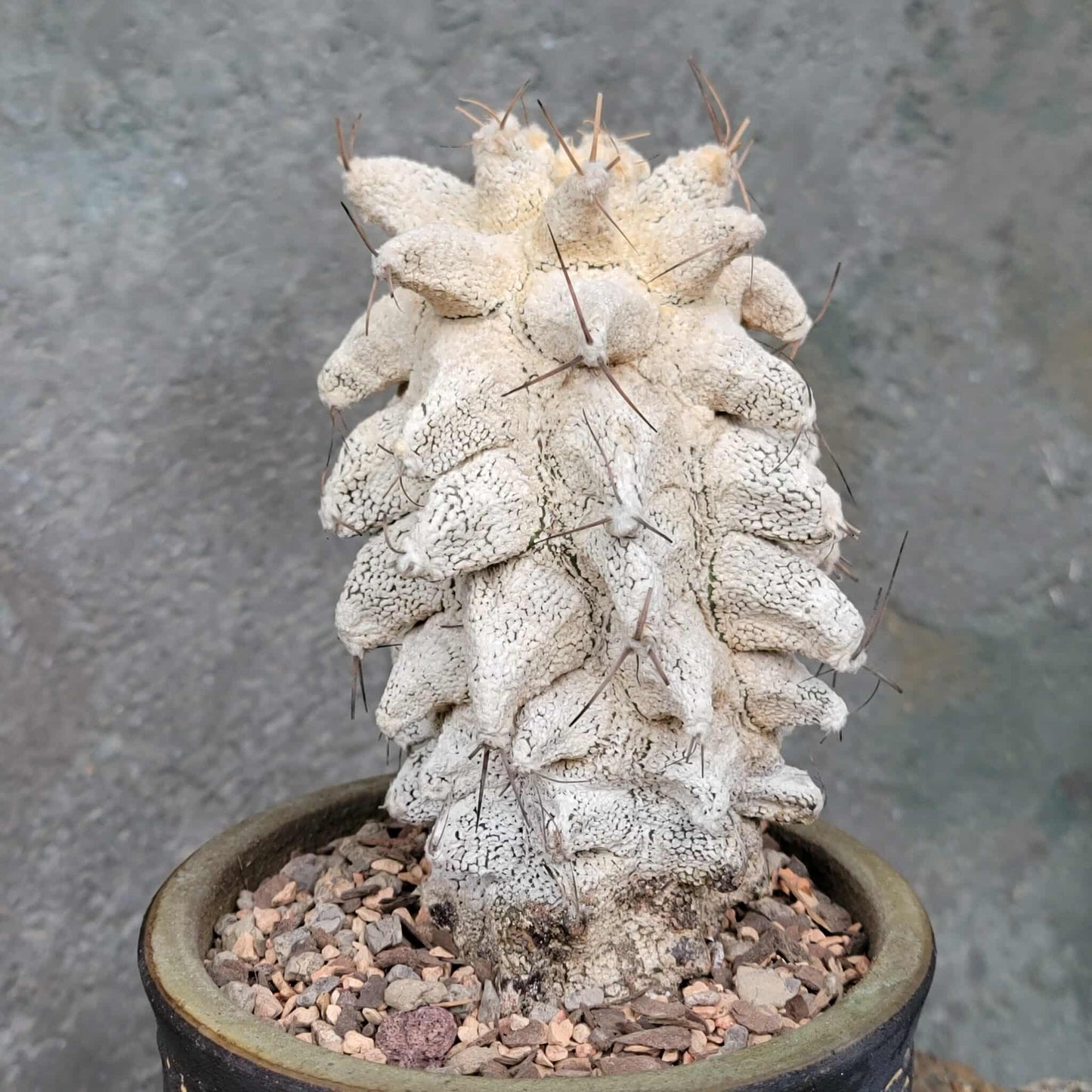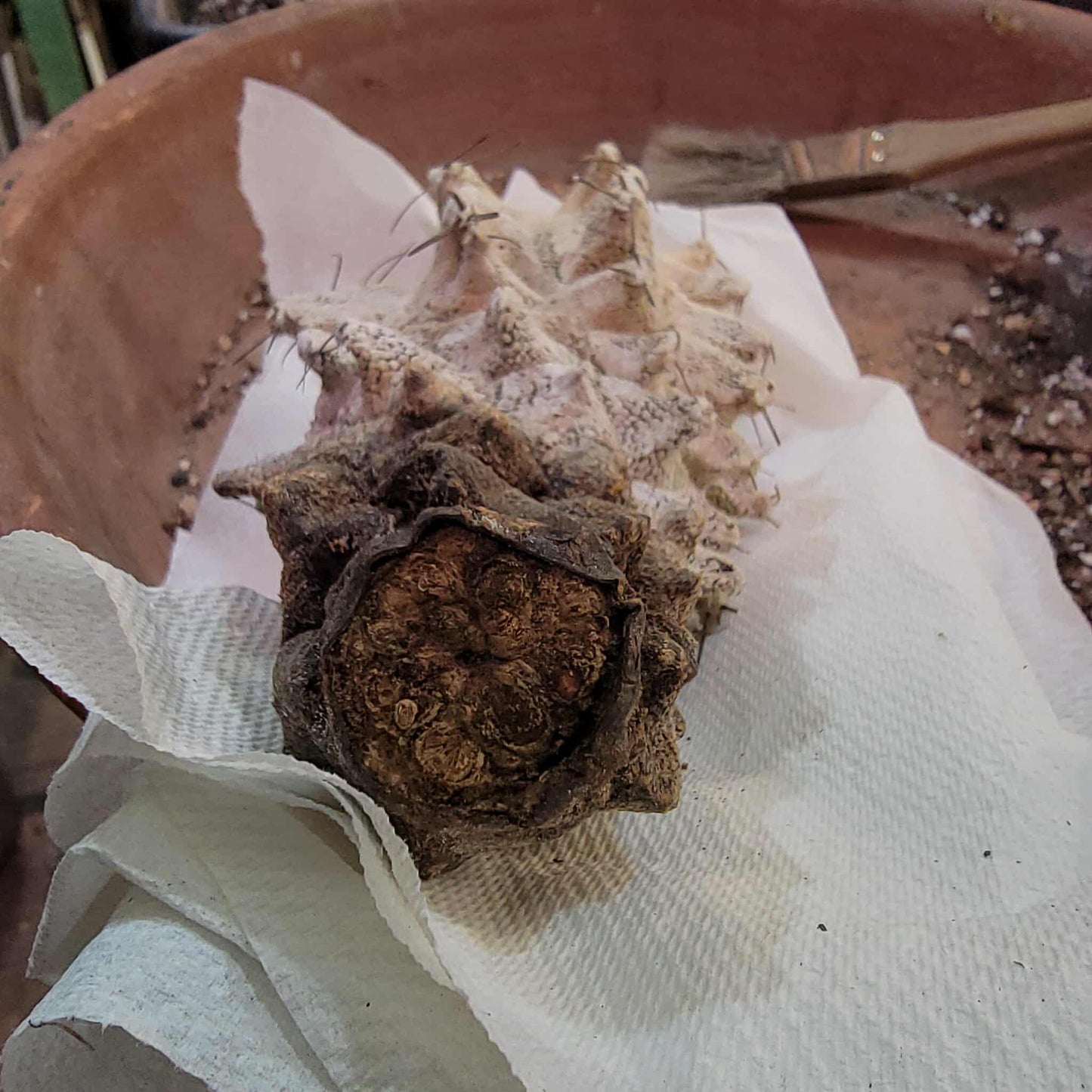Shangri-Ha Cactus Ranch
Astrophytum Ornatum cv. Kikko
Astrophytum Ornatum cv. Kikko
Couldn't load pickup availability
Astrophytum ornatum cv. Kikko - Very Rare
You will receive this exact, amazing, huge specimen.
Measures 6" tall above the soil line x 4.5" wide.
Roots as shown.
Showcased here in one-of-a-kind handmade pottery (sold separately).
Will be shipped bare root.
Astrophytum ornatum cv. Kikko is a rare and sought-after cultivar of the Astrophytum ornatum cactus, known for its distinct, geometric, and bumpy-looking surface. The "cv. Kikko" designation refers to this unique mutation, which causes the cactus stem to be split into prominent, conical tubercles.
Characteristics
- Unique stem and tubercles: Unlike the standard Astrophytum ornatum which has strong ribs, the "Kikko" cultivar has its stem split into distinct, armored-looking tubercles, or "notches". The longer and wider these bumps are, the more prized the specimen.
- Appearance: The plant is green to grey-green and covered in small, white flecks that can be either sparse or dense, depending on the specific clone. It also features long, stiff red-brown spines.
- Growth habit: It starts with a spherical shape and becomes more columnar as it matures. It is typically a solitary cactus and usually does not produce offsets.
- Flowers: Mature plants produce large, yellow, funnel-shaped flowers with a sweet scent during the warmer months.
- Variations: A variegated form, Astrophytum ornatum cv. Kikko f. variegata, also exists, displaying lighter, unpigmented areas on its stem.
Care requirements
- Light: This cactus requires bright light and can tolerate some direct sun. However, it can suffer sunburn if left in intense, direct sun for too long. Stronger light encourages better flowering and spine production.
- Watering: Water sparingly, allowing the soil to dry out completely between waterings. Overwatering can lead to rot, to which this cultivar is susceptible. During winter dormancy, keep the plant perfectly dry.
- Soil: Use a very gritty, mineral-based, and fast-draining soil mix with little organic matter. This provides the drainage necessary to prevent root rot.
- Temperature and hardiness: It prefers warmth and should be protected from frost. While it can tolerate short periods of cold if kept dry, it thrives with a minimum temperature of 5–8°C (41–46°F) during the rest period.
- Fertilizer: Feed with a high-potassium, low-nitrogen fertilizer during the growing season. Avoid feeding in winter.
- Pests and diseases: It can be susceptible to pests like red spider mites and mealybugs. Proper watering and air circulation are key to preventing rot.
- Repotting: Due to its large taproot, it needs a pot with sufficient depth and should be repotted every 2–3 years.
